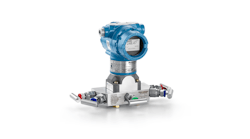The following is abstracted from Part IV of a five-part series, titled “Electronic Pressure Measurement Principles,” by WIKA Instrument Corporation. This series is available on the Application Notes section of the WIKA website. To read the rest of this series, click here.
Pressure measurement instruments are generally available in various forms except for special designs and models, which are designed for specific applications. Options differ in regard to their pressure range, electrical and pressure connection, output signal, and measurement accuracy. With so many possible configurations the selection of a suitable pressure measurement instruments for a specific application can be a complex process. This overview presents the most important specifications for pressure measurement instrument selection.
Pressure Range
The first option that should be considered is the pressure range of the pressure measurement instrument. The pressure range defines the limits of how much pressure can be measured or monitored in an application. Essential to the pressure range specification are the lower and upper limits of the pressure range, and if the range is absolute pressure or gauge pressure. The accuracy data specified in the data sheet applies within the defined pressure range.
Pressure Connection
The second option that should be considered is the pressure connection, also referred to as the process connection. The pressure connection is used to direct the pressure medium to the sensor. Almost all pressure connections have a standard thread and can be installed at the pressure measurement point.
Internal vs. Flush Diaphragms
Another option to consider is internal diaphragms versus flush diaphragms. There is a difference between pressure connections with an internal diaphragm and connections with a flush (flat) non-clogging diaphragm. In process connections with an internal diaphragm the pressure medium directly contacts the sensor diaphragm through the pressure port. In process connections with a flush diaphragm, the pressure port is sealed using an additional stainless-steel diaphragm. A transmission fluid transmits the pressure from the flat external diaphragm to the internal sensor diaphragm.
Threads & Seals
Threads and seals provide a multitude of options. To enable the simultaneous installation and sealing of the measurement instrument at the measurement point, the pressure connections are usually designed with a thread. Different threads are commonly used worldwide and both male and female threads are available. Sealing methods are as diverse as the threads. Some threads including tapered threads are self-sealing. Other threads require an additional seal, gasket, or o-ring. For this there are different application-specific and regional solutions. The most common for parallel threads are sealing behind the thread (i.e. between the thread and the case) or sealing in front of the thread by means of a metal sealing ring.
Electrical Connection
The electrical connection of an electronic pressure measurement instrument also presents multiple options, a standard plug-in connector or an integral cable. The nature of the connection has considerable influence on the IP (Ingress Protection) rating of the instrument and often limits the permissible ambient temperature range, and the resistance of the instrument to aggressive media, or environmental influences (e.g. UV radiation).
Output Signals?Output signals of electronic pressure measurement instruments are generally an analog voltage or current signal, which is transmitted to a control unit connected downstream of the instrument. However, pressure measurement instruments are also available with digital outputs. With the exception of switching output signals, which are already in a digital format, the output signal should be linear and proportional to the applied pressure.
Standard Analog Output Signal
Other output signals include standard analog output, ratiometric output, and digital output. The most common output signal in pressure measurement technology is the analog output signal. Commonly used are the current signal 4-20 mA and the voltage signals 0-5 V, 0-10 V and 1-5 V. In comparison to voltage signals, the advantages of the current signals are a much lower sensitivity to electromagnetic interference and automatic compensation of resistive loads the current loop. The elevated zero point of the 4-20 mA current signal and likewise with the 1-5 V voltage signal also provides cable break detection separately from instrument fault detection.

